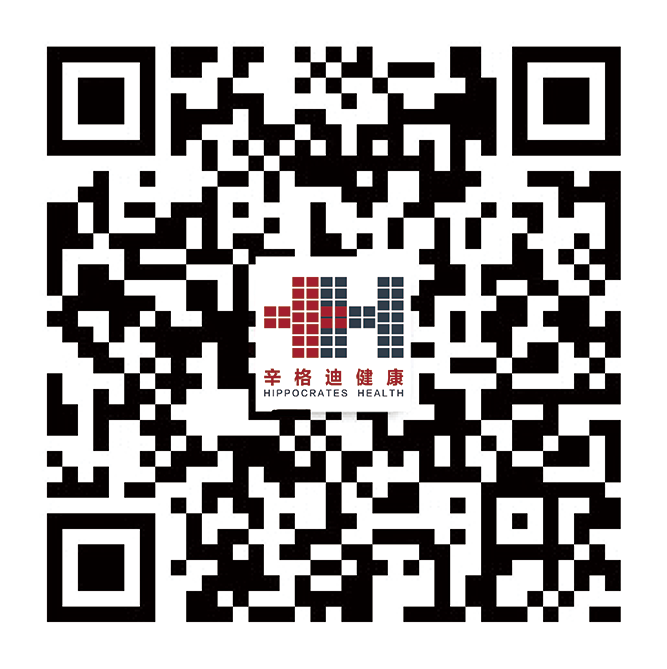GMP Document Management (DMS) Project of Shanghai Hengshan Pharmaceutical Co., Ltd.
I. A Century-old Pharmaceutical Enterprise Forging Ahead
In the brilliant landscape of China's pharmaceutical industry, Shanghai Hengshan Pharmaceutical Co., Ltd. shines like a bright star with its unique luster. Founded in 1942, this pharmaceutical enterprise, formerly known as Shanghai Baike Capsule Factory, has undergone the transformation of public-private partnership and several name changes. Overcoming numerous challenges along the way, it has developed into a comprehensive and powerful enterprise integrating R&D, production and sales.
With more than half a century of profound accumulation, Hengshan Pharmaceutical has achieved remarkable results, holding over 500 drug approval certificates — a figure that testifies to its strong R&D capabilities and rich product portfolio. Its production base boasts an astonishing annual production capacity of 5 billion tablets, continuously supplying high-quality pharmaceuticals to the market. The products cover ten major therapeutic areas including anti-infection, cardiovascular diseases and nervous system diseases, forming a tight health protection net to safeguard public health. Among them, the "Hengshan Brand" series of antibacterial drugs has gained widespread reputation, securing a stable position in the market and winning the trust of medical institutions and praise from patients, becoming a synonym for quality and efficacy.
II. Traditional Models: Plagued by Difficulties
However, as the times advance, the regulatory requirements for China's pharmaceutical industry have been continuously raised, imposing strict standards on the authenticity and traceability of data throughout the entire life cycle of pharmaceuticals. At this juncture, the traditional paper-based document management model with manual operations that Hengshan Pharmaceutical has long relied on has gradually exposed numerous drawbacks, like layers of shackles restricting the enterprise's development.
In the critical links of document circulation and approval, low efficiency has become an insurmountable obstacle. From drafting to final approval, a document needs to be transferred between multiple departments, and the lengthy approval cycle, which is as slow as a snail's pace, seriously delays work progress. Imagine a crucial document related to the launch of a new product being passed around among departments for months — business opportunities may have slipped away quietly in the meantime. Meanwhile, paper documents rely on manual filling and signatures, which not only easily lead to minor errors such as handwriting mistakes, but also make it difficult to ensure the authenticity and validity of signatures. Worse still, documents often suffer delays or losses during circulation, plunging management into chaos like a tangled mess that is hard to unravel.
From a cost perspective, the traditional management model is like a bottomless pit, constantly consuming the enterprise's resources. The printing, binding and archiving of a large number of documents consume massive office supplies; the piles of paper are not only a waste of resources, but also a heavy burden on the enterprise's costs. It is estimated that Hengshan Pharmaceutical spends nearly several hundred thousand yuan annually just on paper for document management — a significant sum. In addition, the enterprise has to rent a large amount of valuable storage space to keep these documents, and this cost is also not negligible. Moreover, manual document management requires professional personnel, leading to a corresponding increase in labor costs.
In terms of document change management, the traditional model is even more fraught with loopholes. The recovery and destruction of outdated documents are like an arduous task that is difficult to accomplish effectively. This results in a high risk of employees using outdated documents in their daily work, planting potential time bombs for pharmaceutical quality. Once, an internal audit found that some employees were still using outdated production operating procedures — this problem sounded a loud alarm to the management, making them deeply aware of the urgency for reform.
III. Breaking the Deadlock: The Emergence of DMS
Faced with the numerous predicaments of the traditional management model, Hengshan Pharmaceutical did not sit idle, but proactively sought ways to break the deadlock. After in-depth research and rigorous professional evaluation, it resolutely introduced the GMP Document Management System (DMS) developed by Shanghai Singdi Health Technology Co., Ltd. This decision, like a ray of dawn, illuminated the enterprise's path forward and brought it new management concepts and advanced technical means.
The DMS project adopted a scientific strategy of "overall planning and phased implementation", advancing in an orderly manner like a well-planned campaign. In the first phase, the focus was on building a basic document management system that meets regulatory requirements — just like laying a solid foundation for a high-rise building. At the same time, an efficient communication and collaboration mechanism between various departments was established to ensure the smooth flow of information within the enterprise, laying a solid foundation for subsequent digital upgrading. In the second phase, the focus shifted to realizing the full digitalization of document management, covering the entire life cycle of pharmaceuticals from R&D to commercialization with comprehensive and refined document system management. This not only ensured that the enterprise's document system fully complied with regulatory requirements, but also made great efforts to improve internal management efficiency and collaboration capabilities, making the enterprise's operations more smooth and efficient.
In terms of business model, the DMS project was also innovatively divided into two phases. The first phase mainly focused on the document management of production and quality systems, conducting comprehensive sorting and digital management of various documents in the production process. This measure is like installing a precise navigation system for the production process, greatly improving the accuracy, timeliness and traceability of documents. The second phase was committed to completing the construction of document management for the R&D system, digitally integrating experimental data, research reports, patent documents and other materials in the R&D process. This not only realized efficient sharing and collaborative work, but also accelerated the R&D process like pressing the "accelerator button" for R&D, enabling the enterprise to take the lead in the path of innovation.
As one of the core products of Singdi Aotai Digital Platform, the GMP Document Management System (DMS) is the crystallization of wisdom from industry experts and IT professionals. With the core concept of "Quality Compliance Expert", this platform provides comprehensive and solid support for enterprises from multiple dimensions. Its highly customizable capability is remarkable: the built-in configuration tools cover multiple functional modules of quality management, and enterprises can easily customize their exclusive quality systems according to their own needs without complex programming operations. Even personnel with simple training can quickly get started to customize forms, decision trees and dashboards, accurately meeting specific business requirements. In terms of data access, the "intelligent loading" function adopted by the platform is a major highlight — like a considerate housekeeper, it can automatically cache frequently used data, optimize the utilization rate of network bandwidth, and ensure that users can quickly access large-capacity records and data, greatly improving work efficiency. In addition, its distributed architecture has been carefully optimized for server expansion, improving system access efficiency through standard APIs. It also integrates practical functions such as automatic email notifications, SMS notifications and dashboard alerts, effectively reducing the risk of users missing tasks or approvals. At the same time, the standard intermediate service layer provided by the platform facilitates integration with third-party systems, realizing seamless data exchange and enabling enterprises to be easily integrated into a broader digital ecosystem.
IV. Project Planning: Advancing Steadily
(I) Overall Planning and Phased Implementation
The advancement of the DMS project is highly strategic, adopting the strategy of "overall planning and phased implementation". In the first phase, the project team focused on building a basic document management system that strictly complies with regulatory requirements, laying a solid foundation for subsequent work. A communication and collaboration mechanism between various departments was also established at this stage to ensure the smooth flow of information and break down inter-departmental barriers. Just like building a high-rise building, the work in the first phase is like laying the foundation — although it may not be eye-catching, it is crucial, providing stable support for the subsequent digital upgrading. In the second phase, based on the achievements of the first phase, comprehensive digital construction was carried out, incorporating the document system throughout the entire life cycle of pharmaceuticals from R&D to commercialization into management. This ensures that the enterprise not only meets regulatory requirements, but also achieves a qualitative leap in internal management, improving efficiency and collaboration capabilities.
(II) Innovative Model Covering the Entire Process
In terms of business model, the DMS project has achieved innovative breakthroughs. The first phase centered on the document management of production and quality systems. Various documents in the production process, such as production records and quality inspection reports, were comprehensively sorted and digitally managed. This significantly improved the accuracy of documents, greatly reducing errors that might occur in manual filling. At the same time, timeliness was guaranteed — the transmission of documents is no longer limited by physical space, and relevant personnel can obtain the required documents in a timely manner. Traceability also provides strong support for quality control — in case of problems, the source can be quickly traced. The second phase focused on the construction of document management for the R&D system. Experimental data, research reports, patent documents and other materials in the R&D process were digitally integrated, allowing R&D personnel from different departments to share information and work collaboratively on the same platform. This greatly shortened the R&D cycle and accelerated the R&D process.
(III) Technology Empowerment for Efficient Management
Relying on a strong technical architecture, the GMP Document Management System provides solid support for efficient management. Its highly customizable capability is a major highlight — the built-in configuration tools enable enterprises to customize quality systems according to their own needs without complex programming. For example, enterprises can customize exclusive forms based on their own production processes and quality control points to record key data in the production process. The customization of decision trees can help enterprises quickly find the optimal solution when facing complex business decisions. The customization of dashboards can intuitively present various key data indicators of the enterprise, facilitating the management to grasp the operation status of the enterprise at any time. In terms of data access, the "intelligent loading" function optimizes the utilization rate of network bandwidth by caching frequently used data. When users access large-capacity records and data, they no longer need to wait for a long time, greatly improving work efficiency. The distributed architecture has been optimized for server expansion, improving system access efficiency through standard APIs and ensuring the stable operation of the system even under high concurrency. In addition, the integrated functions such as automatic email notifications, SMS notifications and dashboard alerts ensure that users will not miss any important tasks or approvals, guaranteeing the smooth progress of work. The standard intermediate service layer facilitates integration with third-party systems, realizing seamless data exchange and enabling enterprises to better utilize external resources to enhance overall competitiveness.
V. Remarkable Achievements: Setting an Industry Benchmark
(I) Significant Leap in Enterprise Benefits
After only 4 months of intensive implementation, the DMS project has brought earth-shaking and remarkable results to Shanghai Hengshan Pharmaceutical, like a magical transformation.
In terms of comprehensive labor efficiency, data statistics have achieved a qualitative leap — becoming real-time, accurate and reliable, with a speed increase of 80%. This means that the enterprise can obtain key data more quickly to provide timely support for decision-making. After the completion of the first phase of the project, the relevant statistical positions were decisively abolished, and the number of new recruits was reduced by approximately 20%. As the number of users of the project gradually covers all employees, the effect of labor cost savings has become more significant, allowing the enterprise to invest more resources in the development of core businesses.
In terms of product quality, the DMS project is an outstanding guardian. The informatized traceability rate of product quality reaches over 90% — the data of each production link is clearly traceable, and in case of quality problems, the root cause can be quickly identified. The consistency and integrity of data have been enhanced by 100%, ensuring the stability of product quality. The online monitoring and real-time early warning functions further safeguard quality control, increasing the average level of online quality control by 1-3% and improving the efficiency of PQR (Product Quality Review) analysis by more than 20%. These achievements strongly ensure the reliability of product quality, allowing consumers to use Hengshan Pharmaceutical's products with confidence.
In terms of error reduction, the DMS project has also achieved remarkable results. Statistical errors have been eliminated by over 90%, and human errors by over 80%, greatly reducing losses caused by mistakes. The labor efficiency of document and record management has been significantly improved — the document conversion and approval processes have been optimized, with the approval speed increased by approximately 30%. More than 70% of batch production records, auxiliary records, post documents and other materials have been digitized, which is not only environmentally friendly but also greatly improves management efficiency. The expenditure on document and record printing and related consumables has been reduced by approximately 80%, saving a large amount of costs for the enterprise. The time spent on filling in records and documents has been reduced by more than 50%, allowing employees to devote more time and energy to more valuable work.
The training efficiency has also undergone tremendous changes due to the DMS project. After the training and assessment were shifted to online, the total time for training organization was reduced by approximately 60%, greatly saving the labor, material and time costs of training organization. The time for training effect statistics has been improved by more than 80%, enabling the enterprise to understand the training effect of employees more quickly and adjust training strategies in a timely manner. The effect of post training has been improved by approximately 40%, cultivating more professional and efficient talents for the enterprise and providing more solid talent support for its development.
(II) Profound Impact: Leading the Industry
In the current highly competitive pharmaceutical industry environment, digital management has become an inevitable path for enterprise development. By successfully implementing Singdi's GMP Quality Compliance Digital Solution, Hengshan Pharmaceutical has realized the two-way overall supervision of its quality management system, providing valuable experience and new ideas for domestic pharmaceutical enterprises.
Its successful experience, like a beacon, sets an example for other enterprises in the industry and encourages more enterprises to courageously embrace the wave of digital transformation. The practice of Hengshan Pharmaceutical has proved that through digital technology, enterprises can effectively improve the level of GMP management, ensure pharmaceutical quality and enhance their competitiveness. This not only helps promote the high-quality development of China's pharmaceutical industry, but also makes an important contribution to safeguarding public drug safety. It is believed that under the leadership of Hengshan Pharmaceutical, China's pharmaceutical industry will continue to move forward on the path of digital transformation, creating more value for people's health and well-being.
VI. Looking to the Future: Sustained Innovation
Standing at the present and looking to the future, Shanghai Hengshan Pharmaceutical has already taken a solid and successful step on the road of digital management, and this is only the beginning of a brilliant journey. We have reason to believe that with its unremitting pursuit of innovation and persistent adherence to excellent quality, Hengshan Pharmaceutical will continue to deepen its digital transformation strategy and constantly explore and expand the application boundaries and potential of the GMP Document Management System.
In the future, Hengshan Pharmaceutical is expected to further optimize the document management process and realize intelligent document classification, accurate push and risk early warning by using cutting-edge technologies such as artificial intelligence (AI) and big data analysis. Through AI algorithms, the system can automatically identify key information in documents, providing employees with more intelligent search and screening functions and greatly saving the time cost of document retrieval. Big data analysis can help enterprises mine valuable information from massive document data, providing data support for decision-makers and assisting enterprises in making more scientific and reasonable decisions.
At the same time, Hengshan Pharmaceutical will also actively strengthen communication and cooperation with other enterprises in the industry, sharing its valuable experience and innovative achievements in the process of digital management. In this process, Hengshan Pharmaceutical will play its role as an industry benchmark, driving the entire pharmaceutical industry to accelerate its pace on the path of digital transformation. By establishing industry exchange platforms and organizing seminars, it will promote mutual learning and reference among enterprises, jointly pushing the digital process of China's pharmaceutical industry to a new height.
Here, we also sincerely call on the majority of pharmaceutical enterprises to actively learn from the successful experience of Shanghai Hengshan Pharmaceutical and courageously embrace digital transformation. In this era of rapid development, only by keeping up with the pace of the times and actively introducing advanced management concepts and technical means can enterprises remain invincible in the fierce market competition. Let us work together to create a better future for China's pharmaceutical industry and contribute more to safeguarding the safety of public drug use and people's health and well-being!
VII. Related Solutions
- Solution 1: Hippocrates GMP Document Management System (DMS)
- Solution 2: Hippocrates GMP Training Management System (TMS)
VIII. Related Cases
- Case 1: GMP Document Management (DMS) Project of Jiangsu Zhiyuan Pharmaceutical Co., Ltd.
- Case 2: GMP Training Management (TMS) Project of Suzhou Fushilai Pharmaceutical Co., Ltd.



